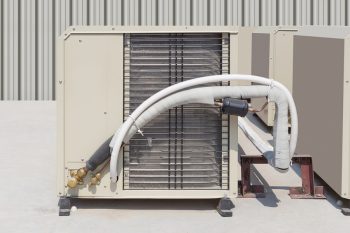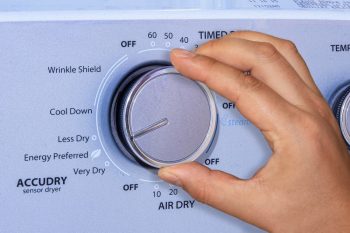
When designing or remodeling a home, one aspect that’s often overlooked is the height of electrical outlets. While it may seem like a minor detail, the height of an outlet can significantly impact its functionality and accessibility. This article will dive deep into the subject, providing you with everything you need to know about how high off the ground an electrical outlet should be.
The standard height for electrical outlets in residential homes is about 12 inches from the top of the floor covering to the bottom of the receptacle box, or 16 inches to the top of the box. However, local building codes and individual laws may have specific requirements. For instance, the Americans with Disabilities Act requires that outlets on branch circuits of 30 amperes or less be no higher than 48 inches and no less than 15 inches from the floor. Always consult with a professional electrician or your local building department for precise measurements.
Standard Height for Electrical Outlets
The standard height for electrical outlets in residential homes is about 12 inches from the top of the floor covering to the bottom of the receptacle box, or 16 inches to the top of the box. This height is generally followed to ensure ease of installation and user convenience.
However, it’s essential to check local building codes and individual laws in your area, as they may have specific requirements. For example, the National Electrical Code (NEC) does not specify a standard height for outlets, but the Americans with Disabilities Act (ADA) requires that electrical receptacles on branch circuits of 30 amperes or less be located no higher than 48 inches and no less than 15 inches from the floor.
Why this Height?
The recommended height for electrical outlets is not specified in the NEC, but there are general guidelines followed by electricians and builders. Uniform outlet heights are important for several reasons.
On the installation side, it makes the process of installing multiple boxes along a wall faster and easier. Uniform box heights also help with cutting and placing insulation in the walls and attaching drywall to the studs.
For users, irregular heights can be disorienting, and boxes placed too high or too low can be inconvenient or even inaccessible to disabled or elderly residents.
Different Height Requirements
There are different height requirements for various rooms or areas within a home. For rooms with sloped ceilings, at least 50% of the required floor area must have a ceiling height of at least 7 feet. In some cases, the minimum allowable ceiling height for finished basement areas, including bedrooms, is 6 feet 4 inches.
Safety and Functionality
The height of an electrical outlet does not directly affect its safety or functionality. However, there are guidelines and regulations in place to ensure accessibility and convenience for users. Uniform outlet heights are important for ease of installation and user convenience.
Adjusting Outlet Heights
Homeowners can adjust the height of their electrical outlets by hiring a professional electrician to perform the task. The process involves removing the existing outlet, rewiring, and installing a new outlet box at the desired height. It is highly recommended to hire a professional electrician to ensure the work is done safely and in compliance with local building codes and ADA guidelines.
Conclusion
The height of an electrical outlet is a crucial detail that impacts its functionality and accessibility. Whether you’re building a new home or remodeling an existing one, it’s essential to consider the height of your outlets. Always consult with a professional electrician or your local building department to ensure that your outlets are installed at the right height. Remember, the standard height for an outlet may not always be the best height for your needs. Consider the needs of all potential users, including elderly or disabled individuals, when deciding on outlet height.
Frequently Asked Questions
What is the standard height for electrical outlets in commercial buildings?
The standard height for electrical outlets in commercial buildings is typically higher than in residential homes, usually around 18 inches from the floor to the bottom of the outlet box. However, like residential codes, this can vary based on local building codes and ADA regulations.
Can I adjust the heights of my outlets myself?
While it’s technically possible for a homeowner to adjust the heights of their outlets, it’s highly recommended to hire a professional electrician. This ensures the work is done safely and in compliance with local building codes and ADA guidelines.
Are there any special requirements for outlets in bathrooms or kitchens?
Yes, there are special requirements for outlets in bathrooms and kitchens. For safety reasons, outlets in these areas should be installed at least 20 inches above the floor and should be GFCI-protected to prevent electrical shock.
Are there any special regulations for outlets in children’s rooms?
While there are no specific height requirements for outlets in children’s rooms, safety is a paramount concern. Consider installing tamper-resistant receptacles (TRRs), which have spring-loaded shutters that close off the contact openings, or slots, of the receptacles. When a plug is inserted into the receptacle, both springs are compressed and the shutters then open, allowing for the metal prongs to make contact to create an electrical circuit. Because both springs must be compressed at the same time, the shutters do not open when a child attempts to insert an object into only one contact opening, providing a permanent solution to help protect children from electrical injury.
What is a GFCI outlet and why are they required in certain areas?
A GFCI (Ground Fault Circuit Interrupter) outlet is a type of outlet that protects against electrical shock. They are required in areas where electricity and water may come into contact, such as bathrooms, kitchens, and outdoor areas. They work by quickly shutting off power when a ground fault is detected.












